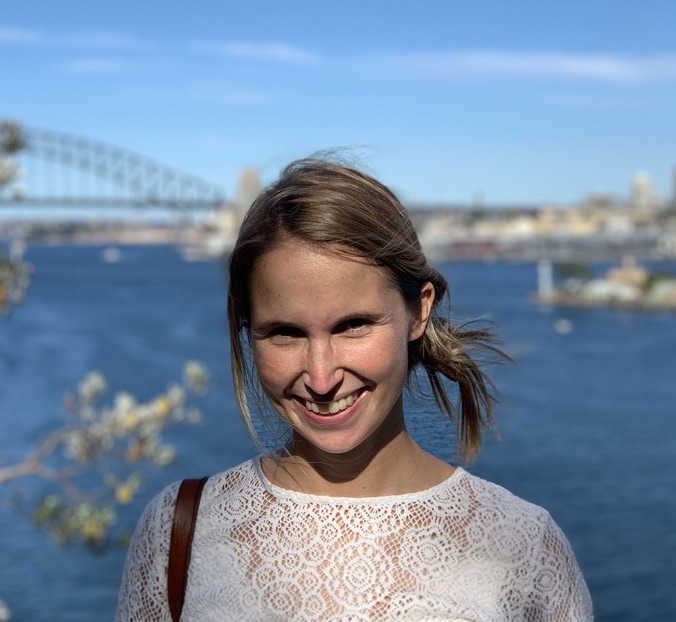Research Interests
My research focuses broadly on visual perception, and I am particularly interested in uncovering internal representations that give rise to perception. I use neuroimaging combined with behavioural data, and computational models to examine how these internal representations emerge and how they dynamically change when we view different types of stimuli.
Publications
* equal contribution
Preprints
- Teichmann, L.*, Hebart, M., Baker, C. I. (2025). Dynamic representation of multidimensional object properties in the human brain. bioRxiv . [doi] [pdf] [code] [MEG data]
Peer-reviewed articles
- Jackson, J. B., Rich, A. N., Moerel, D., Teichmann, L.*, Duncan, J., Woolgar, A. (2025). Domain general frontoparietal regions show modalitydependent coding of auditory and visual rules. Imaging Neuroscience. [doi]
- Hebart, M.*, Contier, O.*, Teichmann, L.*, Rockter, A. H., Zheng, C. H., Kidder, A., Corriveau, A., Vaziri-Pashkam, M., Baker, C. I. (2023). THINGS-data: A multimodal collection of large-scale datasets for investigating object representations in brain and behavior. ELife . [doi] [pdf] [code] [MEG data] [fMRI data] [behavioural data]
- Curby, K. M., Teichmann, L., Peterson, M. A., Shomstein, S. S. (2023). Holistic processing is modulated by the probability that parts contain task-congruent information. Atten Percept Psychophys. [doi] [pdf]
- Corriveau, A.*, Kidder, A.*, Teichmann, L., Wardle, S. G., Baker, C. I. (2023). Sustained neural representations of personally familiar people and places during cued recall. Cortex. [doi] [pdf] [code] [data]
- Teichmann, L.*, Moerel, D.*, Rich, A. N., Baker, C. I. (2022). The nature of neural object representations during dynamic occlusion. Cortex (registered report). [doi] [pdf] [code] [data]
- Curby, K., Teichmann, L. (2022). The time course of holistic processing is similar for face and non‑face Gestalt stimuli. Atten Percept Psychophys. [doi] [pdf]
- Teichmann, L., Moerel, D., Baker, C. I., Grootswagers, T. (2022). An empirically-driven guide on using Bayes Factors for M/EEG decoding. Aperture Neuro. [doi] [pdf] [code]
- Teichmann, L., Edwards, G., Baker, C. I. (2021). Resolving visual motion through perceptual gaps. Trends in Cognitive Science. [doi] [pdf]
- Teichmann, L., Grootswagers, T., Moerel, D., Carlson, T. A., Rich, A. N. (2021). Temporal dissociation of neural activity underlying synesthetic and perceptual colors. Proceedings of the National Academy of Sciences. [doi] [pdf] [data + code]
- Wardle, S. G., Taubert, J., Teichmann, L., Baker, C. I. (2020). Rapid and dynamic processing of face pareidolia in the human brain. Nature Communications. [doi] [pdf]
- Teichmann, L., Quek, G. L., Robinson, A. K., Grootswagers, T., Carlson, T. A., Rich, A. N. (2020). The influence of object-colour knowledge on emerging object representations in the brain. Journal of Neuroscience. [doi] [pdf] [data + code]
- Teichmann, L., Grootswagers, T., Carlson, T. A., Rich, A. N. (2019). Seeing versus knowing: The temporal dynamics of real and implied colour processing in the human brain. NeuroImage. [doi] [pdf] [data + code]
- Teichmann, L., Grootswagers, T., Carlson, T. A., Rich, A. N. (2018). Decoding digits and dice with magnetoencephalography: evidence for a shared representation of magnitude. Journal of Cognitive Neuroscience. [doi] [pdf] [data + code]
- Coltheart, M., Cox, R., Sowman, P., Morgan, H., Barnier, A., Langdon, R., Connaughton, E., Teichmann, L., Williams, N., Polito, V. (2018). Belief, delusion, hypnosis, and the right dorsolateral prefrontal cortex: A transcranial magnetic stimulation study. Cortex (preregistered). [doi] [pdf]
- Teichmann, L., Nieuwenstein, M. R. , Rich, A. N. (2017). Digit–color synaesthesia only enhances memory for colors in a specific context: A new method of duration thresholds to measure serial recall. Journal of Experimental Psychology: Human Perception and Performance. [doi] [pdf]
- De Wit, B., Badcock, N. A., Grootswagers, T., Hardwick, K., Teichmann, L., Wehrman, J., Williams, M., Kaplan, D. M. (2017). Neurogaming technology meets neuroscience education: a cost-effective, scalable, and highly portable undergraduate teaching laboratory for neuroscience. Journal of Undergraduate Neuroscience Education. [pdf]
- Teichmann, L., Nieuwenstein, M. R. , Rich, A. N. (2015). Red, green, blue equals 1, 2, 3: Digit-color synesthetes can use structured digit information to boost recall of color sequences. Cognitive neuroscience. [doi] [pdf]
